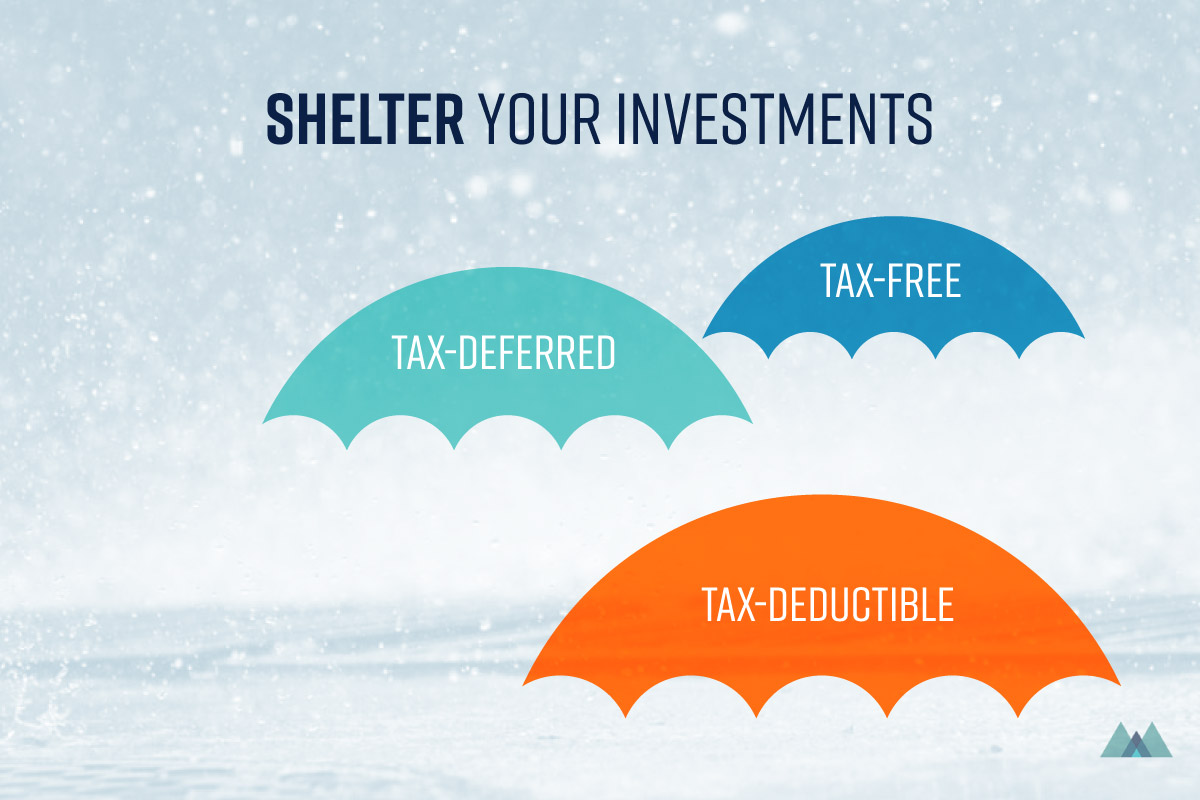What's the Tax Shelter?
When you make money from investments (interest, capital gains, etc), the government sees it as extra income and demands you pay a portion as tax. However, there are specific cases in which the government either allows you to delay tax payment or does not charge you, in the event of, for example, retirement, education, or some other reasons.
The key is those accounts themselves do not give you anything unless you build investments within them. They are simple to open, but you need an investment plan to grow money within those accounts.
- Tax-free: Governments don’t charge tax on this account. It's awesome.
- Tax-deductible: You can reduce your income tax payment by contributing money into this account
- Tax-deferred: You do not pay tax right away, but will pay when you take money out of the account.
To maximize the benefits of the above accounts, maximize the amount of the tax-deductible contributions every month. If your contribution amount exceeds the limit, use other tax-deferred options.
TFSA Vs. RRSP
TFSA (Tax-free Savings Account): It’s tax-free. Government don’t charge any tax on this account, so investment can grow much faster. Just double check maximum contribution of $5,500 per year (currently in 2017) - Be cautious with TFSA over-contribution. You don’t receive any tax refund on the contribution, but putting money in and out to TFSA is flexible.
RRSP (Registered Retirement Savings Plan): It’s tax-deductible and tax-deferred. RRSP makes sense if you are making a good income now and not so much income after retirement. The main benefit is your investment can grow faster by delaying tax now, and you can get a tax refunded. As soon as you start withdrawing money, it will be considered income and you will need to pay tax. Putting money in and taking money out of an RRSP is not flexible - you may even have to pay a penalty if you make any withdrawals before retirement.
When her bank asked Angie, 24, if she wants to open up an RRSP account, she didn’t have any reason to say no. However, Angie did not know how to invest, so kept her savings in those tax-shelter accounts for years.
Now learning a bit about investing, Angie found herself silly. Angie has a time horizon of 30 years before retirement and she shouldn’t touch her RRSP within that time. It doesn’t make sense not to invest for long-term. Now she is looking at funds and ETFs to get higher returns in her RRSP.

Time's up

